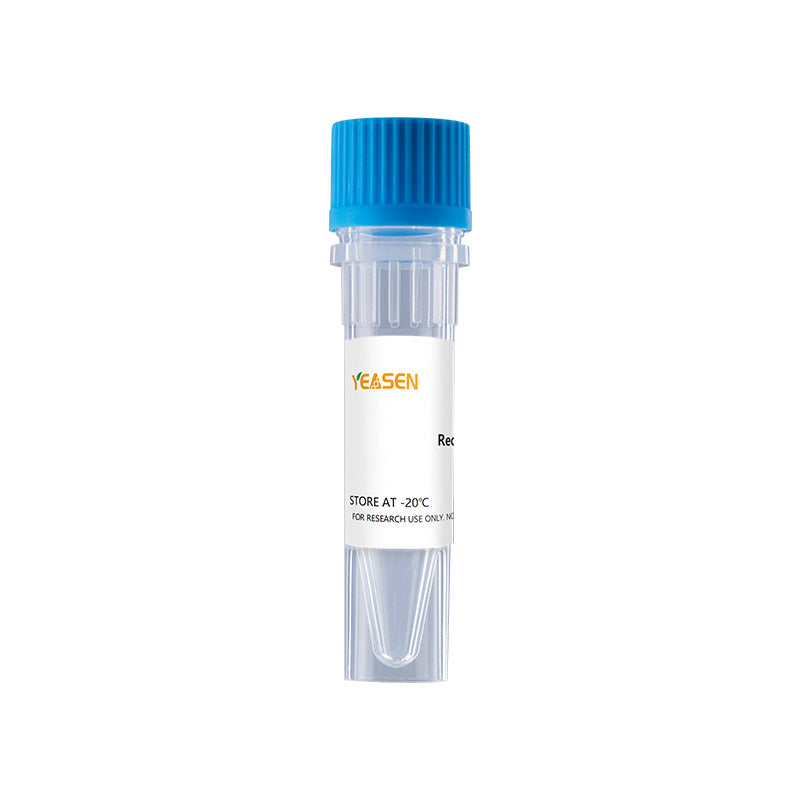Description
CCL23 is a member of CC chemokine family and is encoded by CCL23 gene located on Chr.17 in humans, where near several other CC chemokines. Highly expressed in adult lung, liver, skeletal muscle and pancreas, this protein shows strong chemotactic activity for monocytes, resting T-lymphocytes, and neutrophils, but not for activated lymphocytes. It elicits the effects by binding to CCR1. CCL23 is reported that it can be cleaved into four forms: CCL23 (19-99), CCL23 (22-99), CCL23 (27-99), CCL23 (30-99).
Product Properties
|
Synonyms |
CK-BETA-8; Ckb-8; Ckb-8-1; hmrp-2a; MIP-3; MIP3 ; MPIF-1; MPIF1; SCYA23 |
|
Accession |
|
|
GeneID |
|
|
Source |
E.coli-derived human Macrophage Inflammatory Protein-3, Arg22-Asn120 |
|
Molecular Weight |
Approximately 11.4 kDa. |
|
AA Sequence |
RVTKDAETEF MMSKLPLENP VLLDRFHATS ADCCISYTPR SIPCSLLESY FETNSECSKP GVIFLTKKGR RFCANPSDKQ VQVCMRMLKL DTRIKTRKN |
|
Tag |
None |
|
Physical Appearance |
Sterile Filtered White lyophilized (freeze-dried) powder. |
|
Purity |
> 97 % by SDS-PAGE and HPLC analyses. |
|
Biological Activity |
Fully biologically active when compared to standard. The biological activity determined by a chemotaxis bioassay using human T-lymphocytes is in a concentration of 10-50 ng/ml. |
|
Endotoxin |
<1.0 EU per 1μg of the protein by the LAL method. |
|
Formulation |
Lyophilized from a 0.2 μm filtered concentrated solution in 20 mM PB, pH 7.4, 150 mM NaCl. |
|
Reconstitution |
We recommend that this vial be briefly centrifuged prior to opening to bring the contents to the bottom. Reconstitute in sterile distilled water or aqueous buffer containing 0.1 % BSA to a concentration of 0.1-1.0 mg/mL. Stock solutions should be apportioned into working aliquots and stored at ≤ -20 °C. Further dilutions should be made in appropriate buffered solutions. |
Shipping and Storage
The products are shipped with ice pack and can be stored at -20℃ to -80℃ for 1 year.
Recommend to aliquot the protein into smaller quantities when first used and avoid repeated freeze-thaw cycles.
Cautions
1. Avoid repeated freeze-thaw cycles.
2. For your safety and health, please wear lab coats and disposable gloves for operation.
3. For research use only.
Payment & Security
Your payment information is processed securely. We do not store credit card details nor have access to your credit card information.
Inquiry
You may also like
FAQ
The product is for research purposes only and is not intended for therapeutic or diagnostic use in humans or animals. Products and content are protected by patents, trademarks, and copyrights owned by Yeasen Biotechnology. Trademark symbols indicate the country of origin, not necessarily registration in all regions.
Certain applications may require additional third-party intellectual property rights.
Yeasen is dedicated to ethical science, believing our research should address critical questions while ensuring safety and ethical standards.

